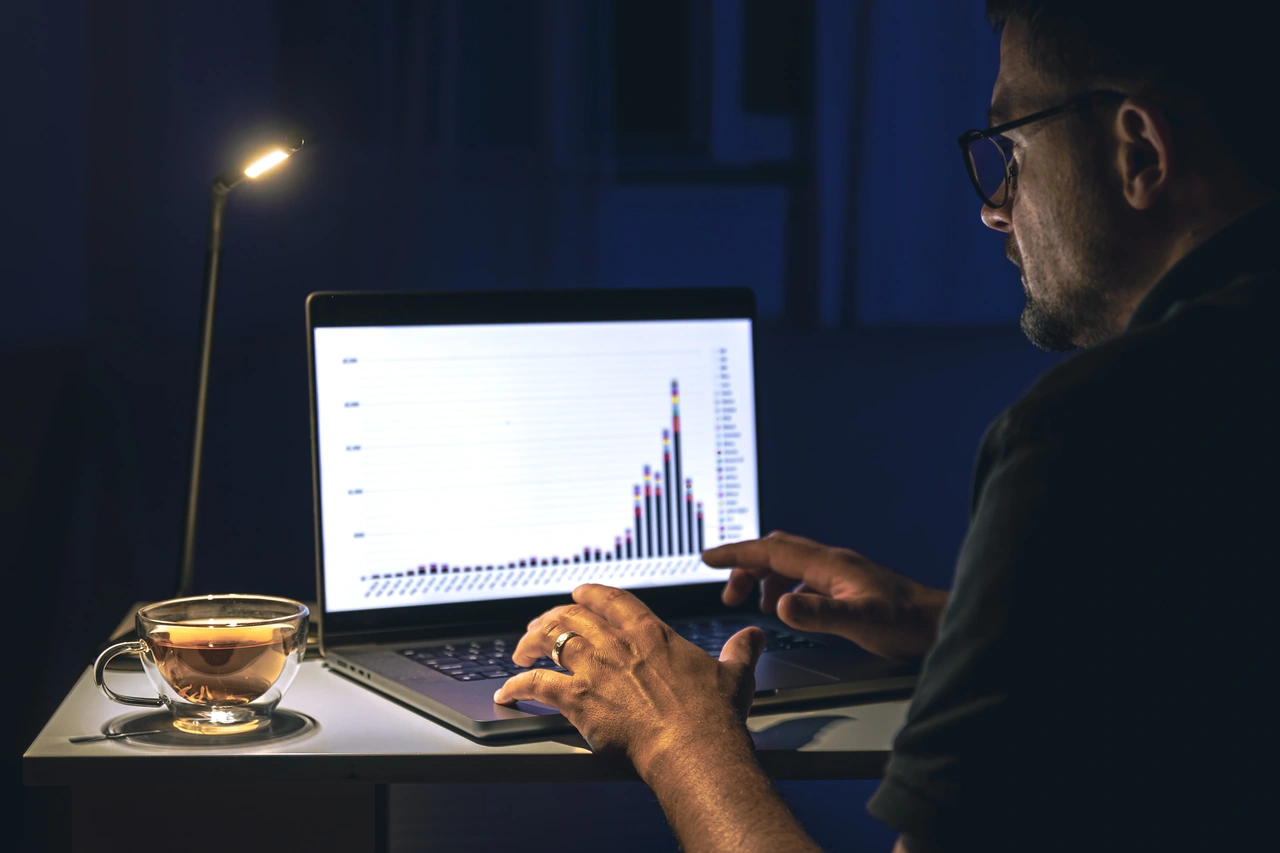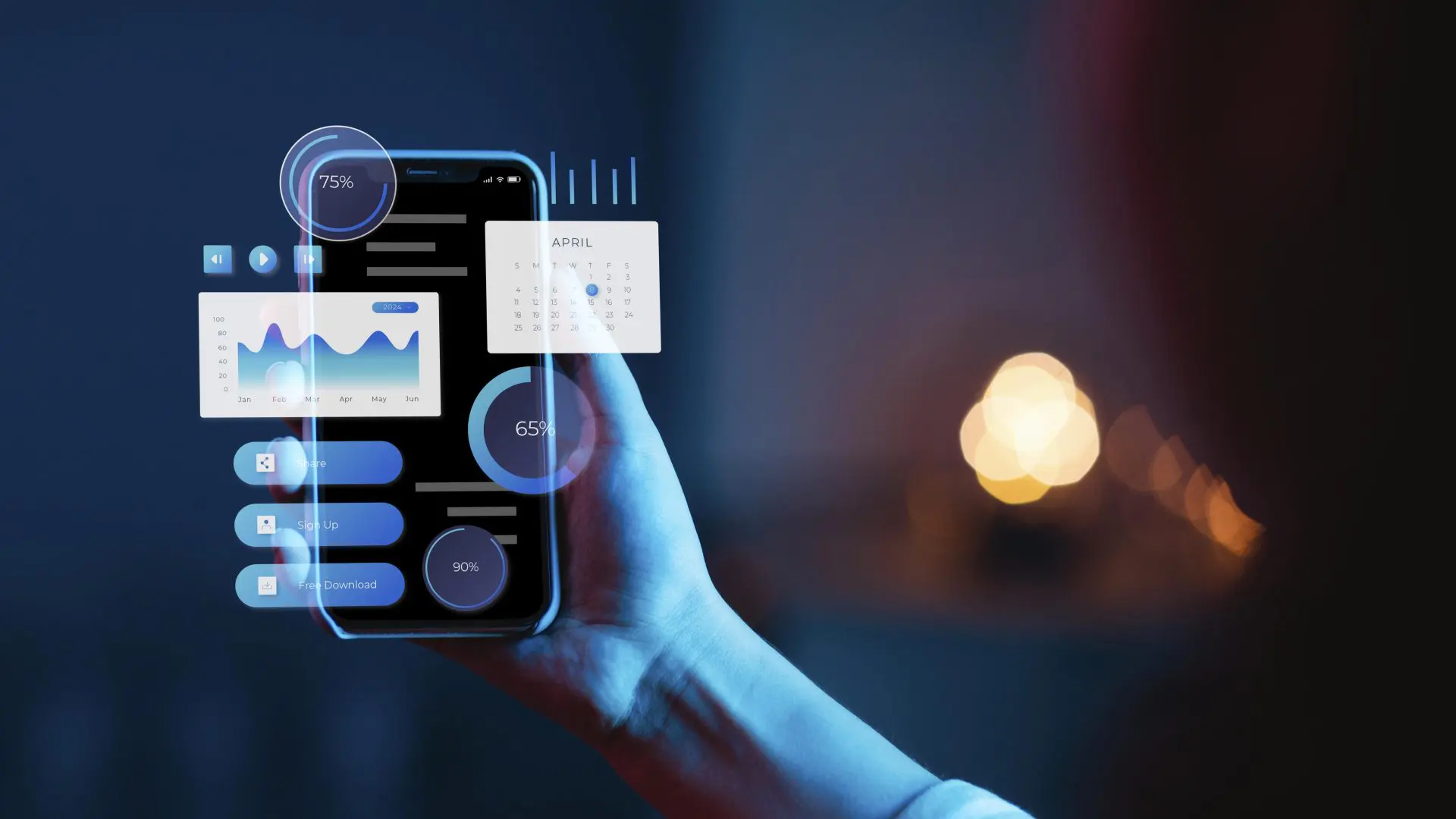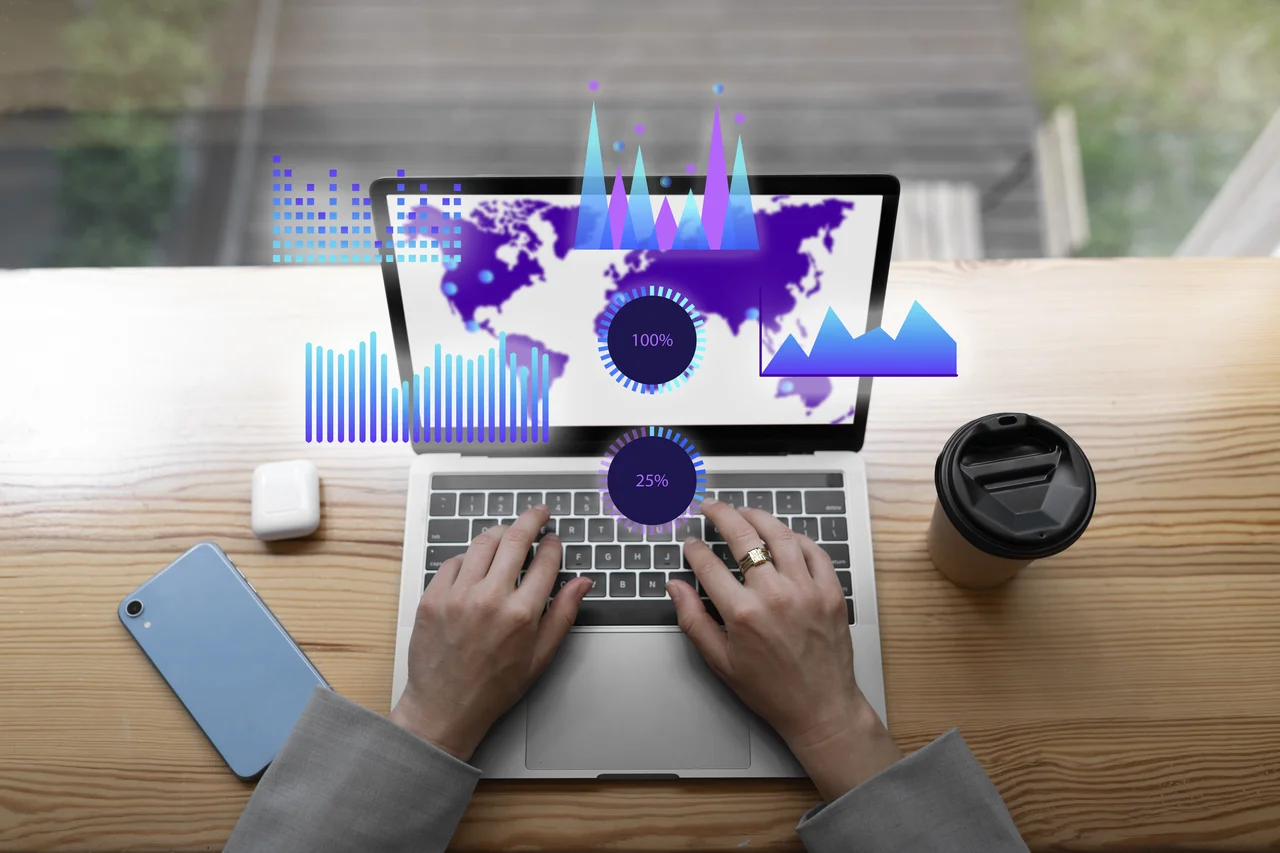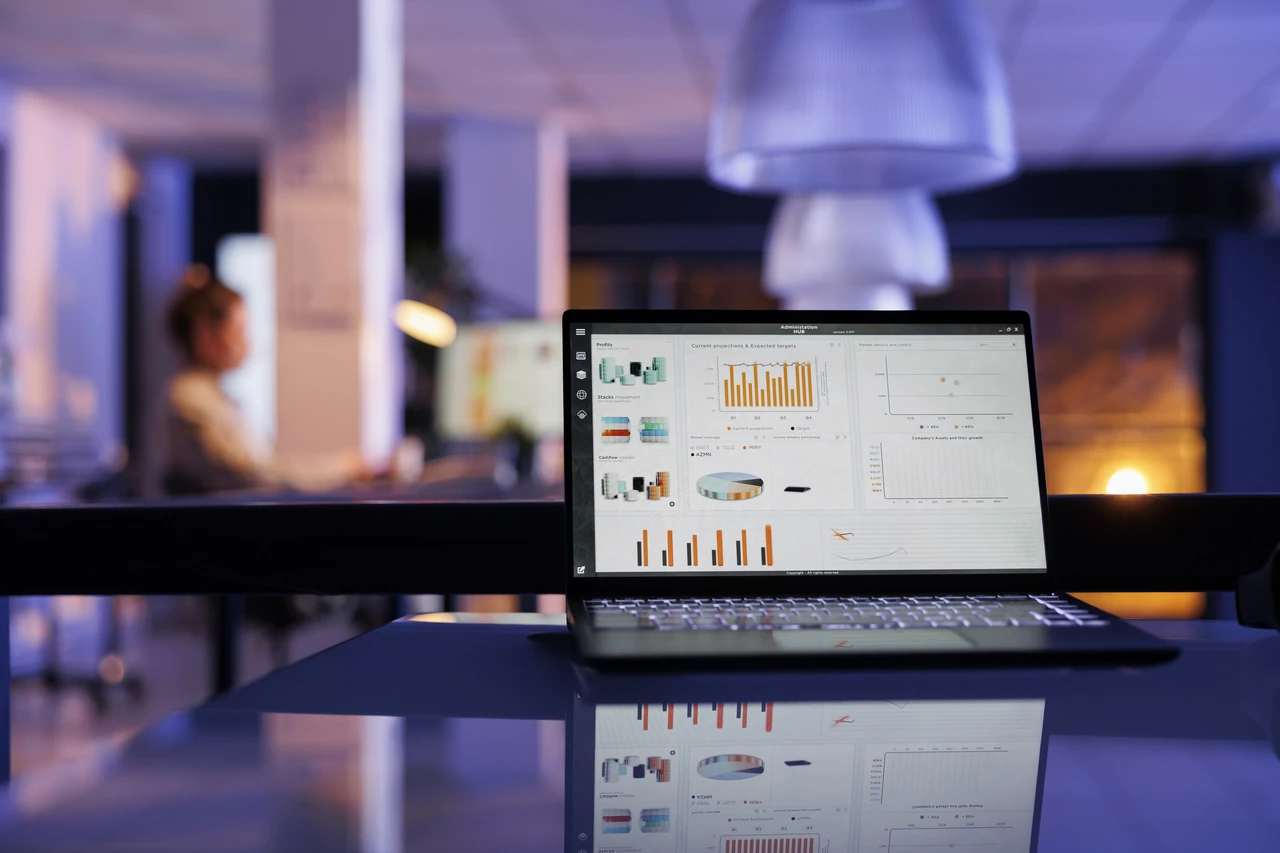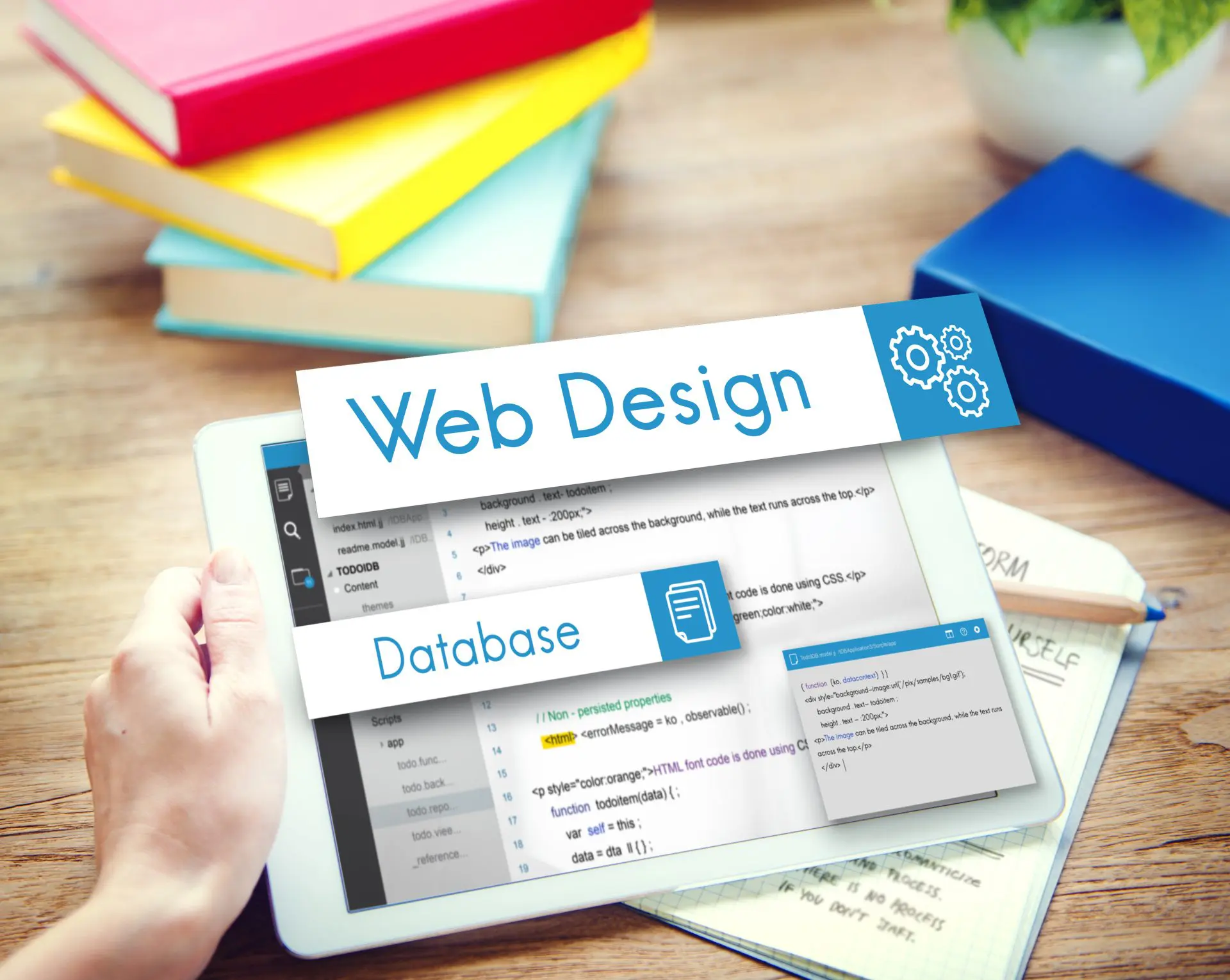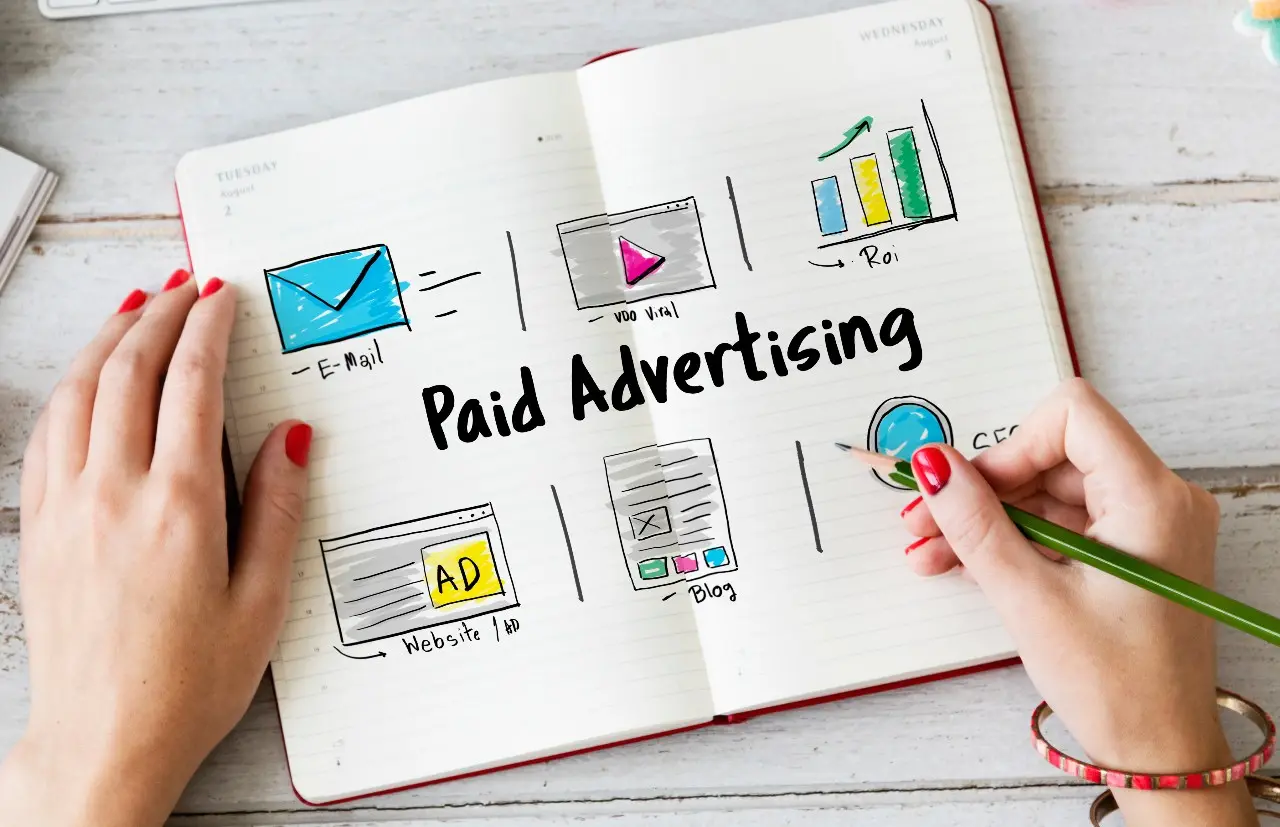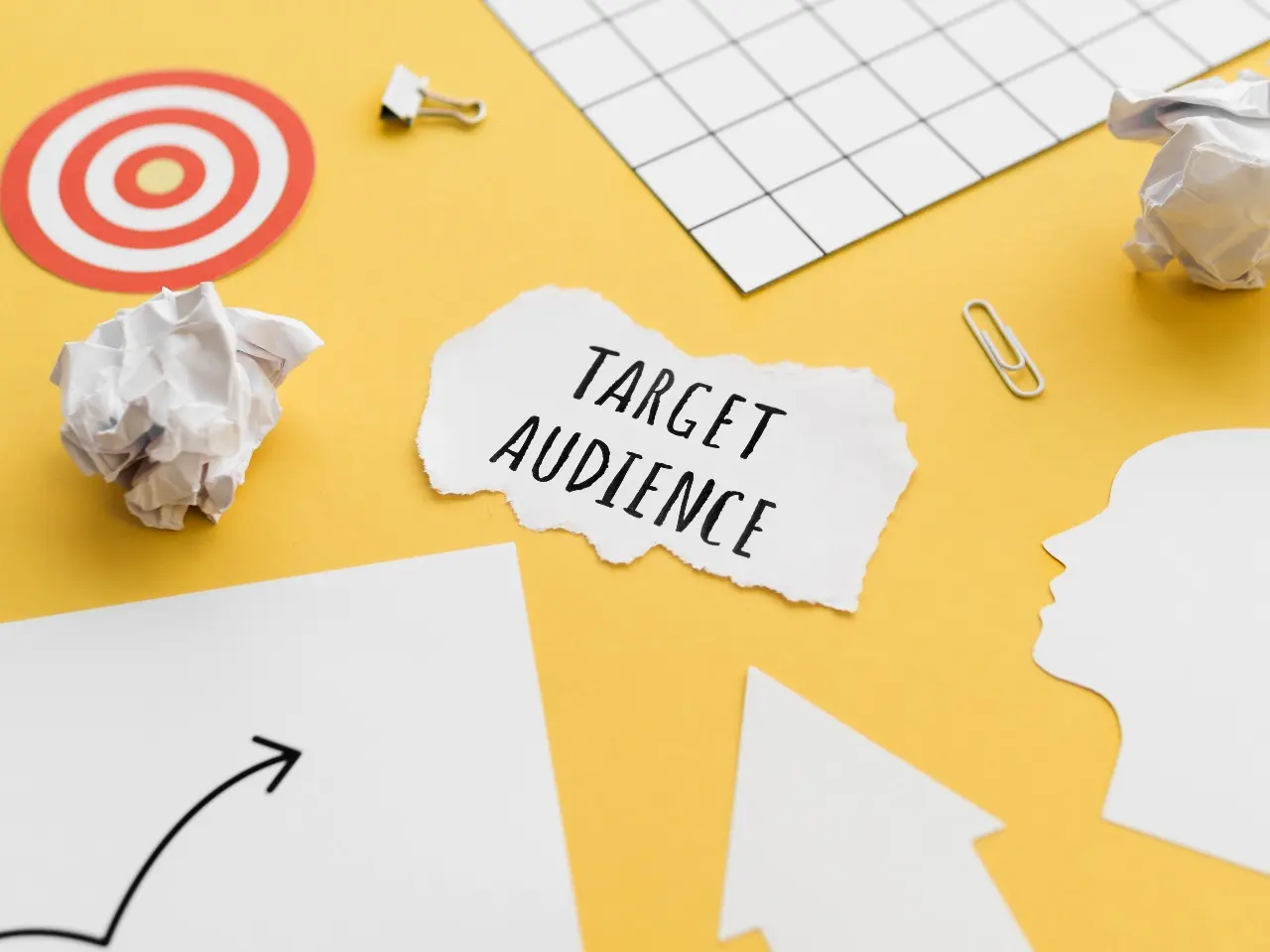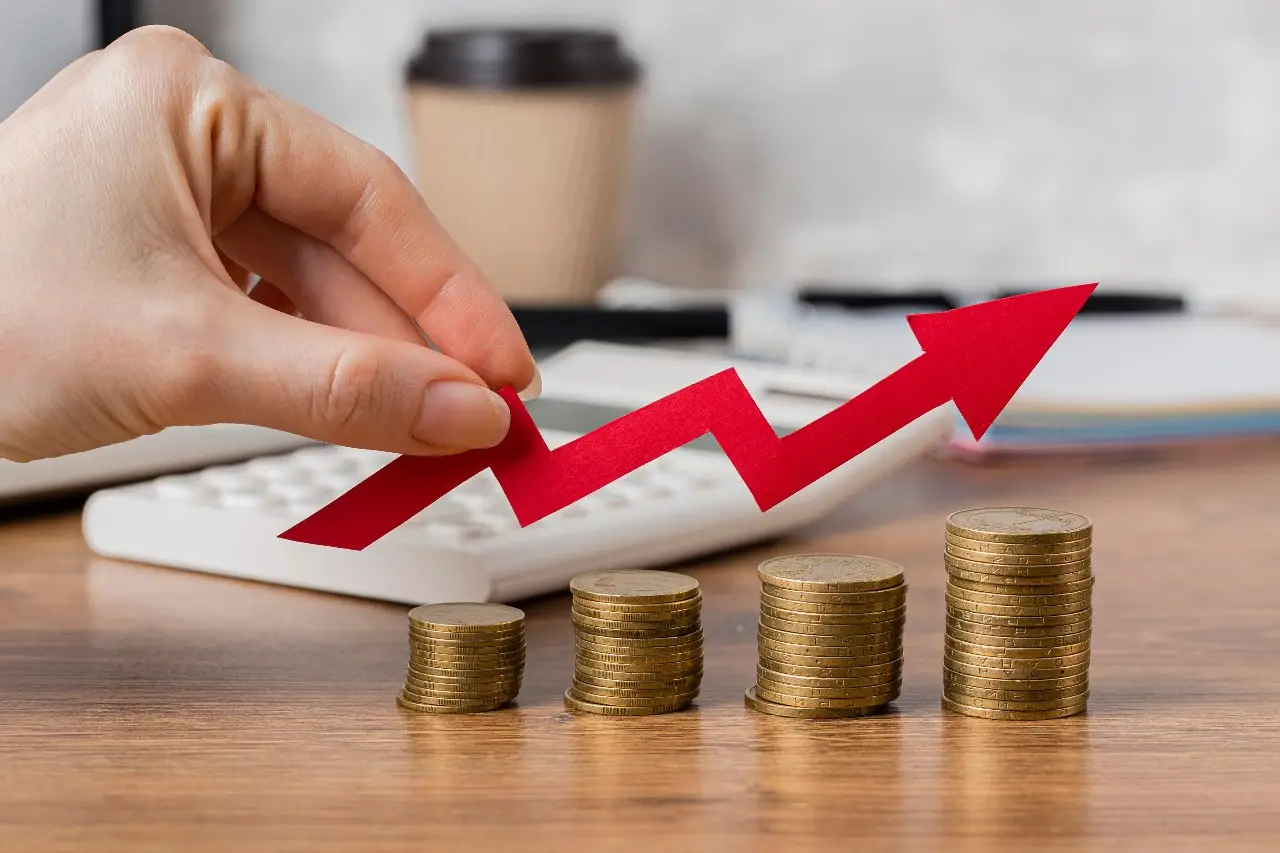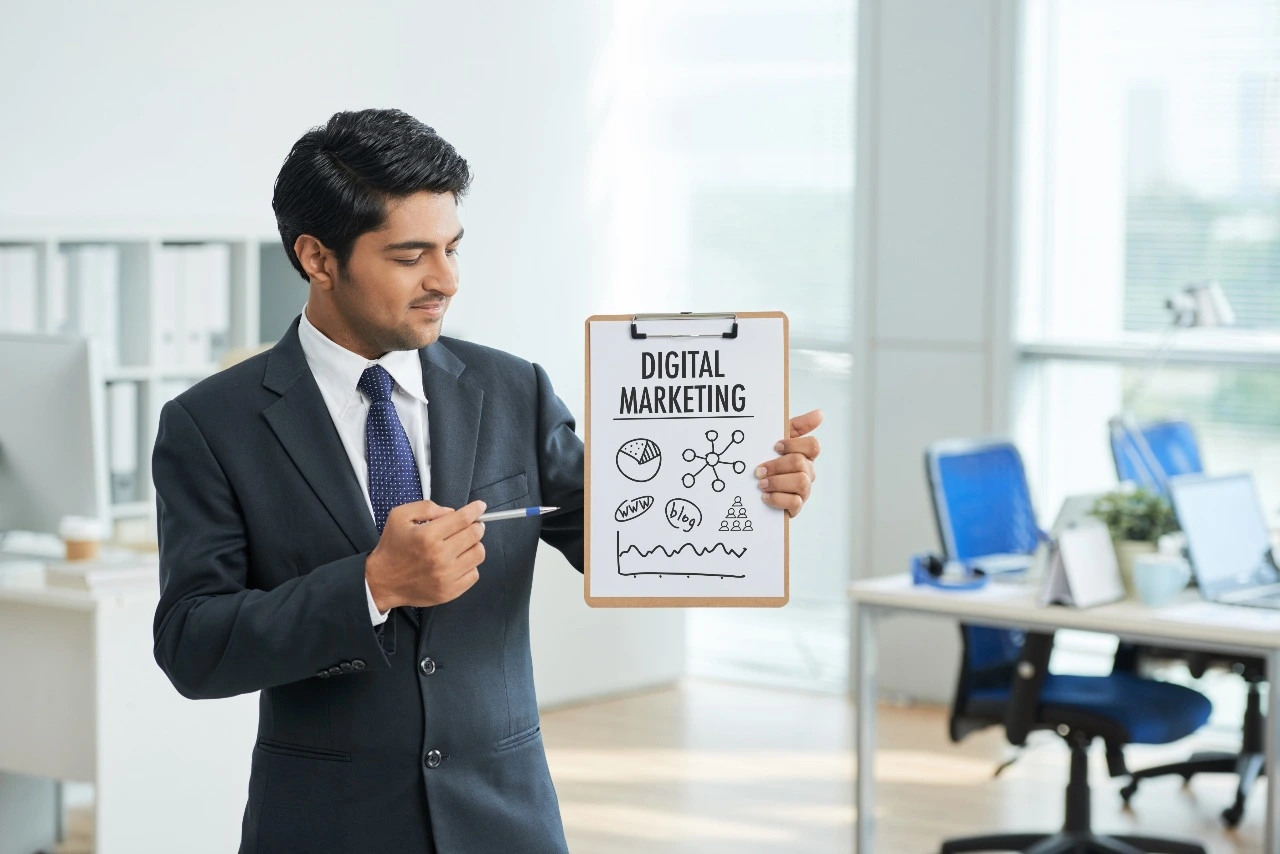Listen to article
In the ever-evolving marketing landscape, deciphering what to track in marketing is more critical than ever for steering your strategies toward success. With trends shifting faster than ever, marketers face the challenge of pinpointing the metrics that truly matter. Are clicks the key to unlocking traffic, or should the focus be on views that capture audience attention? Perhaps conversions reign supreme, turning engagement into tangible business outcomes?
As we look ahead to 2025, the emphasis on AI-driven personalization and the enduring importance of clicks in paid advertising will be highlighted, ensuring marketers stay informed on where to invest their resources. Let’s explore key statistics and insights to help you make data-driven decisions and optimize your marketing strategies for maximum impact.
Smarter Marketing: AI Personalization and Conversational Tools on the Rise
Artificial Intelligence isn’t just a buzzword; it’s the force driving a seismic shift in marketing strategies. As audiences demand more tailored and interactive experiences, AI empowers brands to move beyond generic campaigns, transforming how they connect with customers. From dynamic personalization to real-time conversational engagement, the potential for AI to enhance marketing ROI is limitless.
- AI-driven personalization will dominate online content strategies, with AI analyzing customer data and automating campaigns to provide highly customized experiences. Source
- The global chatbot market is projected to reach $15.5 billion by 2028, up from $5.4 billion in 2023, indicating a massive shift towards AI-driven conversational marketing. Source
Key Takeaway
AI isn’t just improving marketing effectiveness—it’s redefining customer expectations. Businesses that adopt AI tools stand to deliver hyper-relevant messaging, respond to queries instantly, and even anticipate customer needs. However, staying ahead in this transformation requires more than just investment in AI tools; it calls for a mindset shift to embrace continuous optimization. Start small by integrating chatbots or AI analytics tools into your strategy and scale as you uncover new opportunities.
Pro Tip:
Whether you’re using AI to tailor your email campaigns or deploying chatbots for customer support, always test and refine. Use A/B testing to identify what resonates and leverage tools like Drift, Zendesk, or Marketo to align AI-driven insights with your overall marketing goals.
To truly maximize these efforts, consider how AI can complement other aspects of your marketing strategy. For example, combining AI-driven insights with outsourcing email marketing can help streamline your campaigns while maintaining a high level of personalization. By collaborating with experts, businesses can ensure that their AI tools are used to their fullest potential without overwhelming internal teams.
The Dominance of PPC Clicks in the Buyer’s Journey
In the highly competitive digital marketing space, clicks are more than just numbers—they represent intent, interest, and the first step in a customer’s online journey. Whether it’s a user searching for an immediate solution or exploring products before making a decision, clicks serve as the critical bridge between ad impressions and meaningful actions like purchases or inquiries. For advertisers, understanding the value of each click and optimizing for high-intent traffic can spell the difference between wasted ad spend and substantial ROI.
- Over 45% of page visits are driven by ads displayed in search engine results. Source
- Google’s pay-per-click (PPC) ads command roughly 64.6% of all clicks, showing the platform’s overwhelming influence in paid search. Source
- 64% of consumers are inclined to click on Google ads when they are actively looking to purchase. Source
- Paid advertisements are a time-saver for 75% of users, who find it easier to locate what they need through PPC. Source
- Visitors arriving through PPC ads are 50% more likely to convert compared to those from organic search traffic. Source
Key Takeaway
Clicks don’t just drive traffic; they reveal powerful insights about consumer behavior and intent. The high conversion potential of PPC visitors, combined with the strategic targeting capabilities of platforms like Google Ads, makes paid clicks a significant tool in converting interest into action. However, focusing solely on click volume without addressing post-click elements—like optimized landing pages, clear call-to-actions (CTAs), and personalized user flows—can undermine your efforts.
Pro Tip:
Use A/B testing on your landing pages to identify what resonates most with your audience post-click. Experiment with headline structures, CTA placements, and even page load speeds to ensure every click leads to the most valuable outcome—whether it’s a lead, a sale, or long-term customer engagement.
Potential of Paid Search and Programmatic Advertising
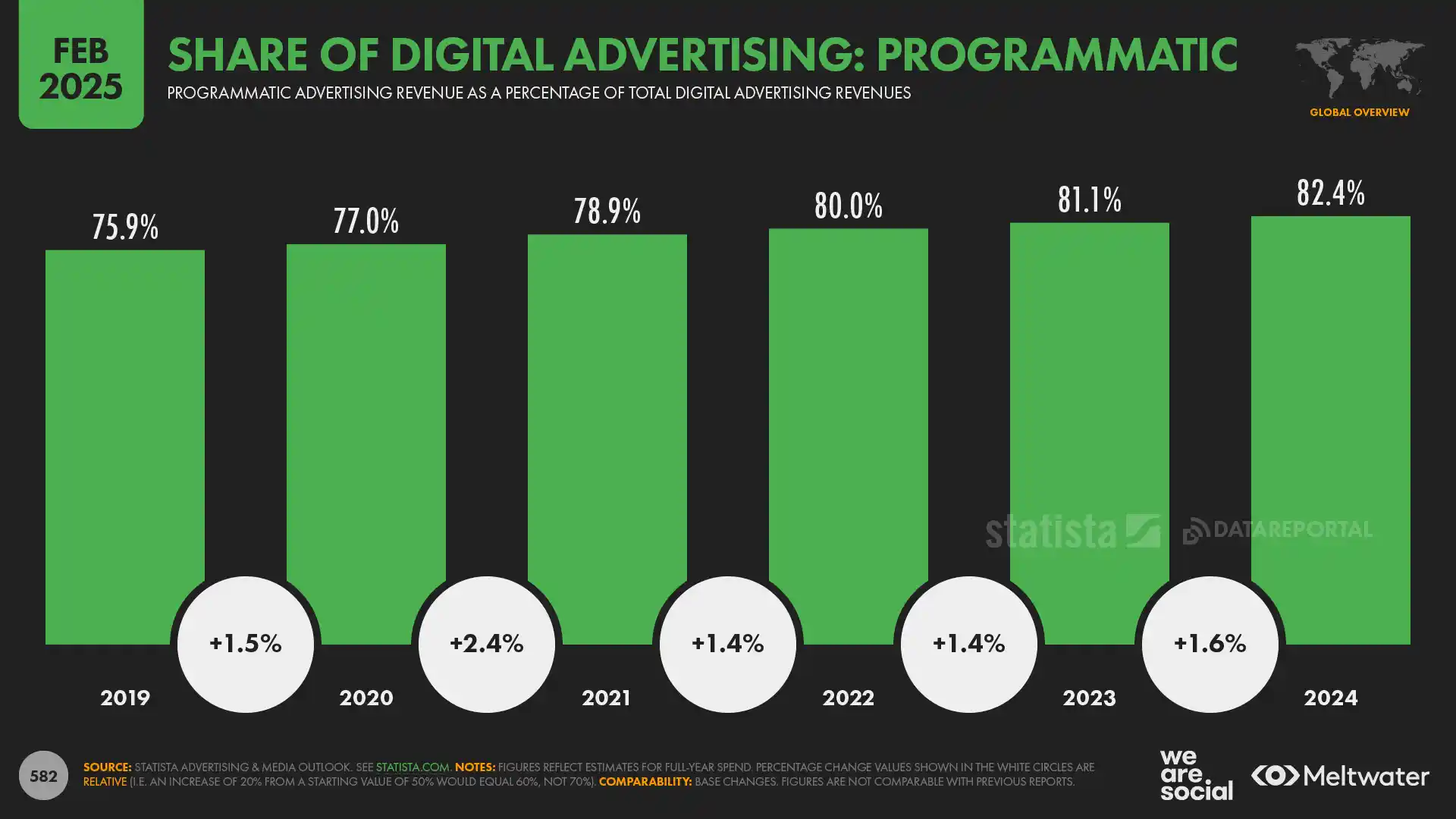
Source: Global Digital Insights
When it comes to driving measurable results, paid search and programmatic advertising have become indispensable for marketers looking to achieve tangible ROI. As competition intensifies across digital channels, these strategies offer brands a way to stand out at the critical moment when users are ready to take action. But simply implementing these tactics isn’t enough—understanding how to optimize for high-intent clicks, precise targeting, and cost-efficiency is where the magic happens. Below are some compelling data points showcasing the dominance of paid search and programmatic ad campaigns.
- The top three paid advertising spots capture approximately 46% of all clicks on a search results page. Source
- A significant 65% of high-intent searches lead to a click on an advertisement. Source
- Spending on programmatic digital display advertising in the U.S. is projected to reach $157.35 billion in 2024. Source
- Programmatic advertising is expected to account for 97% of total digital display ad spending by 2026. Source
- Location-targeted digital ad campaigns can be 20 times more effective than traditional banner ads that lack location specificity. Source
Key Takeaway
These statistics reveal a clear trend: consumers are not only relying heavily on paid search to guide their purchasing decisions, but programmatic advertising’s precision targeting is reshaping how brands connect with their audiences. For marketers, this means there’s no room to settle for broad-stroke campaigns. Allocating budget toward high-intent paid search clicks and leveraging programmatic ads with location-specific targeting can exponentially improve campaign performance.
Pro Tip:
Don’t stop at launching your campaigns—analyze. Use tools like Google’s Ads Data Hub or programmatic platforms to dissect performance metrics: Which keywords drive the most conversions? Which geographic locations yield the best ROI? Constant optimization based on these insights ensures your campaigns don’t just attract clicks but meaningful customer actions.
Acceleration of Ad Investments and the ROI Imperative
In the fast-paced world of digital marketing, businesses are pouring more resources into advertising than ever before, signaling a clear belief in its ability to drive growth. But with skyrocketing budgets comes heightened scrutiny—marketers now face increasing pressure to prove that every dollar spent translates into meaningful results. The focus isn’t just on spending more, but on making smarter investments that directly impact the bottom line.
- Ad spending is projected to grow by 8.01% annually between 2024 and 2028, reaching a staggering $417.4 billion by 2028. Source
- Businesses see an average of $3 in revenue for every $1.60 spent on Google Ads. Source
- PPC campaigns generate, on average, $2 in ROI for every $1 invested. Source
- The Search Advertising segment alone is predicted to hit $118.2 billion in ad spend by 2025. Source
- By 2025, the average ad spend per internet user in search advertising is estimated to reach $378.60. Source
Key Takeaway
These numbers underscore the pivotal role of ROI-focused strategies in today’s advertising landscape. With such significant financial stakes, simply running ads isn’t enough—marketers must monitor campaign performance rigorously, optimize bids, and target high-value audiences to ensure every dollar delivers a measurable return. The key to thriving in this competitive space is leveraging advanced tools like AI-driven analytics to fine-tune ad performance in real time.
Pro Tip:
Don’t just monitor your ad campaigns—actively refine them. Use A/B testing to explore new ad formats and messaging, and review performance metrics like cost per acquisition (CPA) and conversion rates weekly. This approach ensures you’re not just spending, but consistently improving your ROI over time.
Why Prioritizing Engagement and Content Quality Drives B2B Success
In the competitive realm of B2B marketing, creating content that resonates with your audience isn’t just helpful—it’s essential for maintaining relevance and driving conversions. With decision-makers evaluating not only the value of your product but also the trustworthiness of your brand, high-quality, engaging content serves as the bridge to stronger client relationships and measurable performance outcomes. The best strategies don’t rely on churning out content endlessly but instead focus on fostering meaningful connections and understanding what truly engages the audience.
- Building connections with existing clients is a primary focus for 63% of content marketers. Source
- A resounding 83% of marketers emphasize that quality takes precedence over quantity—even if it means producing fewer pieces of content. Source
- Long-form content is considered the most impactful by 60% of surveyed marketers. Source
Key Takeaway
In an environment where 83% of marketers champion quality over volume, it’s clear that investing in well-researched, targeted, and engaging content pays dividends far beyond quick traffic spikes. Metrics like website engagement, email performance, and client retention underscore the need to build deeper, trust-driven relationships with your audience. For B2B marketers, long-form content delivers unmatched value by delving into complex topics, solidifying expertise, and offering actionable insights that readers can’t find elsewhere.
Pro Tip:
To further enhance engagement, align your editorial calendar with your audience’s pain points and decision-making stages. Combine evergreen long-form pieces with data-driven insights, and don’t shy away from experimenting with interactive formats like infographics, thought-leadership webinars, or polls. These can boost engagement metrics and provide fresh opportunities for lead nurturing. For businesses looking to integrate their content efforts into a broader marketing plan, exploring full-service marketing solutions can provide the resources and expertise needed to scale effectively.
Striking the Right Balance: SEO and PPC for Traffic and Conversions
In the fast-paced digital landscape, marketers often face the critical decision of how to allocate resources between SEO and PPC. While PPC offers instant traffic and visibility, SEO focuses on long-term sustainability and organic lead generation. The key to maximizing your marketing ROI lies in understanding not just when to use each strategy, but how to harmonize them for mutual benefit.
- Paid media (PPC) generates twice as many visitors as SEO. Source
- Content creation plays the biggest role in SERP ranking for 57% of survey participants, while 33% indicated that backlinking has a bigger impact on SEO. Source
- Businesses that post at least 16 articles per month generate leads 4.5 times faster and experience 55% more organic search traffic. Source
Key Takeaway
To stay competitive, businesses need to view SEO and PPC as complementary strategies rather than opposing forces. PPC can give you a head start by driving immediate, targeted traffic, while SEO works behind the scenes to build authority and maintain a steady stream of organic visibility. By leveraging PPC’s short-term precision with SEO’s long-term scalability, you create a dynamic traffic-generation engine that not only attracts visitors but also converts them.
Pro Tip:
Use data to bridge the gap between PPC and SEO. Analyze paid ad performance to identify high-converting keywords and integrate these insights into your SEO strategy. Conversely, use SEO analytics to uncover organic keywords that could improve PPC campaigns for better conversion rates. Combining these insights helps you refine your approach and achieve consistent, measurable growth.
Data in Marketing Strategies
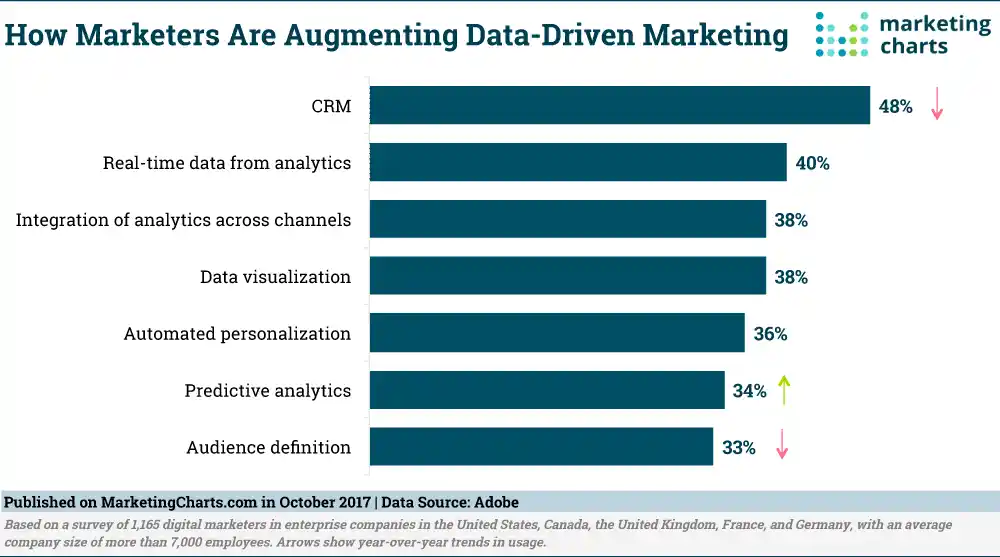
Source: Porch Group Media
In an era where every click, view, and conversion can tell a story, the real challenge for businesses isn’t just collecting data—it’s transforming it into actionable insights. Marketers have access to more tools and analytics platforms than ever before, but the ability to effectively harness this information for measurable results remains elusive for many organizations. Without actionable insights, even the most creative campaigns risk falling short of their potential impact.
- 44% of businesses lack a clear understanding of their marketing’s quantitative impact. Source
- A staggering 87% of marketers consider data to be the most underutilized asset within their organizations. Source
What these numbers underscore is the untapped power of data sitting idle within organizations. While businesses may recognize the importance of metrics, understanding which ones truly matter and how to align them with strategic goals is where the opportunity lies. By developing smarter tracking systems and focusing on metrics that tie directly to campaign performance, businesses can bridge the gap between data collection and actionable insights.
Pro Tip:
Equip your team with tools like Google Analytics, Tableau, or HubSpot that offer advanced reporting capabilities. Pair that with specialized training on interpreting marketing metrics to identify patterns, predict trends, and optimize campaigns for ROI. Remember, data is only as impactful as your ability to act on it—so focus on building a culture of analysis-driven decision-making.
Conclusion
As the data illustrates, the digital marketing ecosystem in 2025 will be defined by its ability to blend personalization, precise targeting, and impactful content with a data-driven approach. The rise of AI-powered personalization, the enduring relevance of clicks, and the dominance of programmatic advertising all point toward a future where understanding “what to track in marketing” goes beyond surface-level metrics. Businesses that succeed will be those that align their strategies with both short-term wins, like PPC-driven traffic, and long-term growth, powered by SEO and high-quality content.
Ultimately, the key takeaway is clear: clicks, views, conversions, and engagement metrics are all interdependent. By focusing on optimizing each aspect—whether through smarter ad spend, long-form content, or better data utilization—you can create a marketing strategy that drives measurable ROI while building deeper connections with your audience.
Ready to boost your traffic and grow your website? Your customers are looking for you, and our SEO services can help you be found across search engines. Reach out today to take the next step in refining your marketing strategy for 2025 and beyond!
About Clicks, Views, or Conversions? What Marketing Metrics To Track in 2025
This guide was written by the Scopic Studios team and reviewed by Araksya Hakobjanyan, SEO Lead at Scopic Studios.
Scopic Studios delivers exceptional and engaging content rooted in our expertise across marketing and creative services. Our team of talented writers and digital experts excel in transforming intricate concepts into captivating narratives tailored for diverse industries. We’re passionate about crafting content that not only resonates but also drives value across all digital platforms.
Note: This blog’s feature image is sourced from Freepik.



